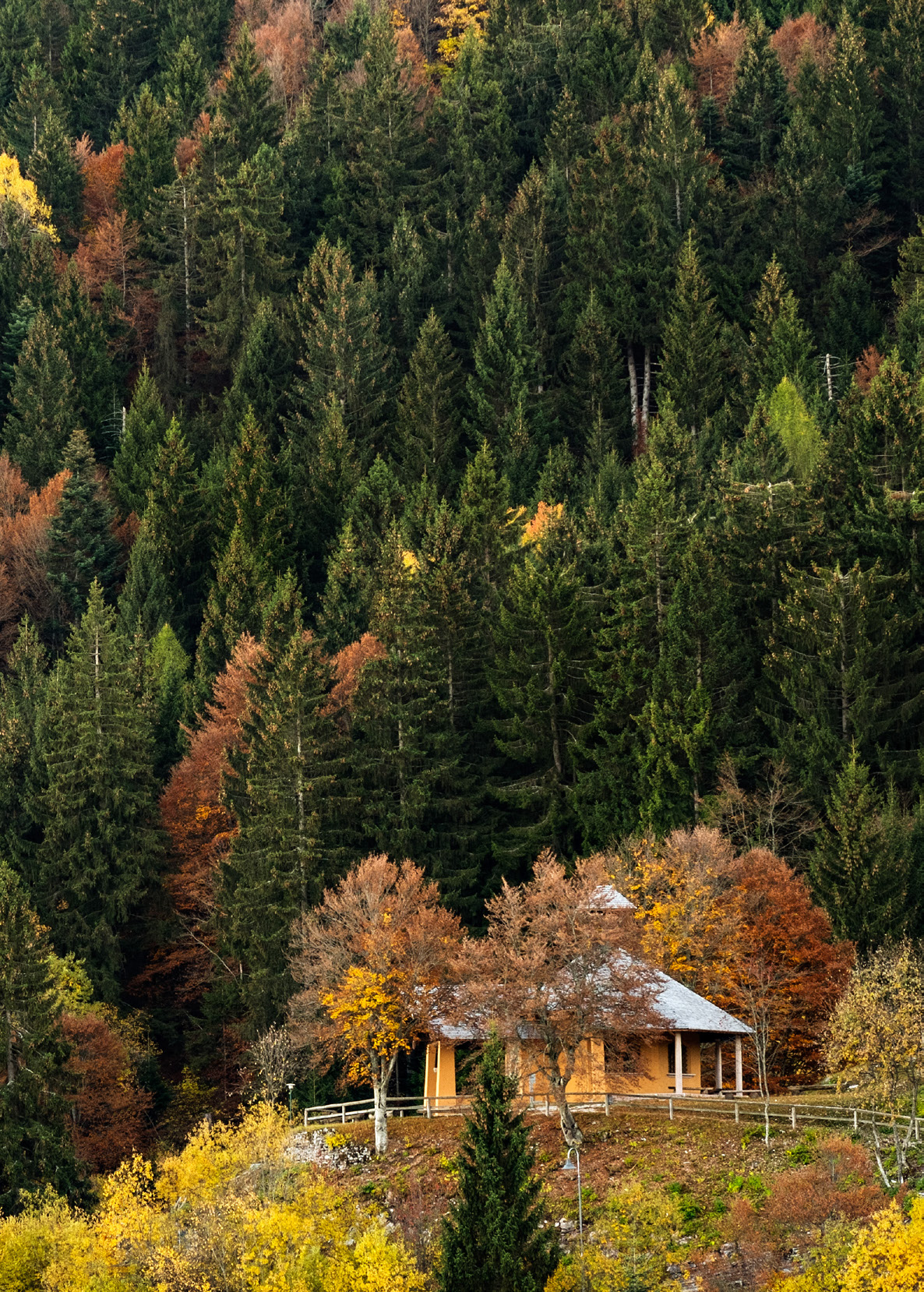
Ettore Sottsass Sr., an architect from Trentino who survived the First World War, left an enduring mark on the mountainous landscape of Monte Bondone. In the aftermath of the war, he undertook various architectural projects, including an alpine chapel in Vanéze in 1929.
Funded by a spontaneous committee, the church stands as a testament to the communal sharing and gratitude among those who endured the war, and enjoyed a unique freedom in its construction as it was not commissioned by any diocese or parish. The octagonal structure, characterised by shingle roofing and pristine white walls, pays homage to Christian traditions while providing a serene haven amidst the mountains. The chapel’s interior design, including the arrangement of the altar and other spaces, demonstrates the architect’s modern vision that surprisingly anticipates the liturgical reforms of the Second Vatican Council. Surrounded by breathtaking mountain vistas, the construction remains a symbol of consecration and contemplation, even though the planned bell tower conceived by Sottsass in 1952 as a final act of re-consecration for the beloved mountain was never realized. The story of Sottsass and his chapel reflects the delicacy of “architectures drawn slowly, with attention and wisdom” which are necessary to avoid bringing harm to the mountains.







